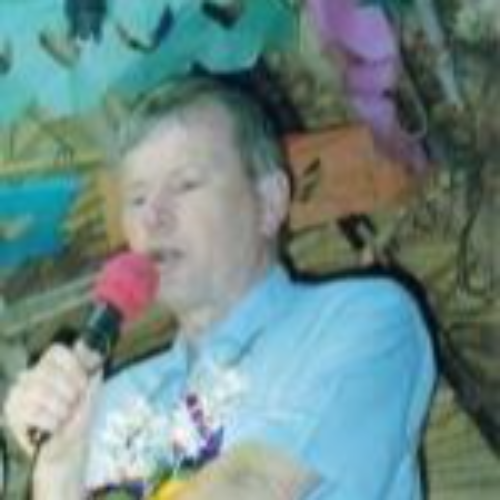-
The Dawn Of Zion's Glory.
Contributed by Christopher Holdsworth on Aug 19, 2024 (message contributor)
Summary: "And the Gentiles shall come to thy light" (Isaiah 60:3).
THE DAWN OF ZION’S GLORY.
Isaiah 60:1-9.
The motif of darkness is at last vanquished by the coming of the light (ISAIAH 60:1). Just as in Creation, God spoke, and there was light (cf. Genesis 1:2-3). The light shines in the darkness, and the darkness cannot overwhelm it (cf. John 1:5).
Like the dying cadences of a musical theme from the first movement of a concerto, the sound of darkness is banished into the background in the second (ISAIAH 60:2). The darkness has been universalised, but that which once dominated the piece is now in its death throes, nothing but a dying echo. Zion is commanded to arise from her despondency, and to shine with the reflected glory of the LORD (ISAIAH 60:1).
As the Gospel day began to dawn over the world with the birth of Jesus, some wise men arrived at the house of King Herod, seeking the One who was ‘born king’ (cf. Matthew 2:2). There in Jerusalem they were met by a revelation from Scripture. When we seek the Lord, the gospel first meets us where we are - then leads us to the feet of Jesus.
Isaiah envisages the flocking of many people to worship the LORD in Zion (cf. Isaiah 2:3). People from all nations, represented in the first instance by the wise men, would come to the gospel light. As history has shown, even kings would embrace the brightness of this new dawn (ISAIAH 60:3).
The sunlight makes its first appearance, its first ‘epiphany’ to the east of Jerusalem, over the Mount of Olives. Inauspiciously at first, but with growing momentum, the light moves over the walls and gates of the city, and begins to permeate every nook and cranny. At last the glory of this light fills the city, and it can be seen from far away, reflecting on the domes and towers (ISAIAH 60:2).
So lift up your eyes and see, says the prophet (ISAIAH 60:4). These words are as applicable to the second coming of Jesus as to the first (cf. Matthew 16:2-3). Jesus said, ‘What I say unto you I say unto all. Watch’ (Mark 13:37).
Those who had not been taken away captive to Babylon could apply this prophecy to their own situation: watch, and you will see your exiled brethren, your sons and your daughters, returning to you in the greatest homecoming of history (cf. Isaiah 35:10). Yet this also anticipates the reception of believing Gentiles into the commonwealth of Israel (ISAIAH 60:5). They are adopted as sons of Abraham (cf. Galatians 3:7), and grafted into Israel - and in time this precipitates the conversion of Israel to her own Messiah (cf. Romans 11:25-26).
Jerusalem has witnessed the trampling of many nations, passing through the land of Judah and Israel. The Assyrians were followed by the Babylonians, the Greeks were followed by the Romans - and so it continued right up into the 20th century. Yet in this vision, where warhorses once prevailed, he sees the camels and dromedaries of peaceful trade (ISAIAH 60:6).
Finally, the wealth of nations flocks to Zion - gold and incense, as carried by the wise men (myrrh is not mentioned here), to acknowledge the new-born king. There are echoes of the visit of the Queen of Sheba, and her lavish entourage: she too sought wisdom, and found it at the feet of Solomon (cf. 1 Kings 10:1-10). And these representatives of the nations sought Jesus, ‘that they might worship Him’ (cf. Matthew 2:2).
The lands in which the nomadic tribes of Ishmael wandered would provide more than ample flocks of sheep and goats for the altar of the rebuilt Temple (ISAIAH 60:7). The returning exiles themselves are seen as a cloud of doves flying home to their dovecots (ISAIAH 60:8; cf. Hosea 11:11).
“The isles” represent the far-off seafaring regions to the west of Israel. “Tarshish” represents Spain (ISAIAH 60:9). King Solomon once had at sea ‘a navy of Tarshish’ bringing “gold and silver” from afar (cf. 1 Kings 10:22). Now Zion’s “sons” were coming from afar, bringing “their silver and gold with them.” To whom? “To the LORD thy God, and to the Holy One of Israel, because He hath glorified thee.”
The light is, ultimately, Jesus (cf. Matthew 4:15-16). He proclaimed Himself to be ‘the Light of the world’ (cf. John 8:12), yet He also calls His followers ‘the light of the world:’ - a city on a hill which cannot be hid (cf. Matthew 5:14). Our job is to reflect His light (ISAIAH 60:1).

 Sermon Central
Sermon Central



